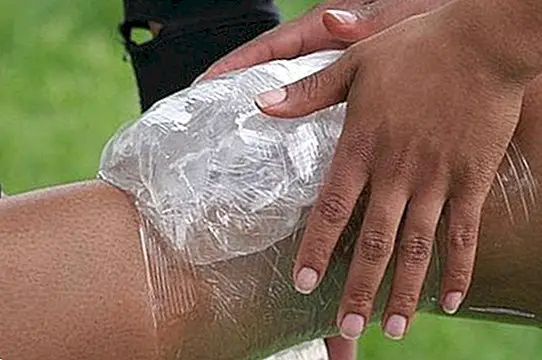Coloring additives
The Food Additives, or food additives, are elements or compounds that are added to food for a certain purpose. In most cases, the main objective is to improve the flavor and aroma, its texture and appearance, or to increase the shelf life and prevent the food from oxidizing naturally.
Since it is common for them to be included in the ingredients used to make this food product, we usually find them on the labels of food or beverages. That is why it is very important to review the labeling of food when we are going to buy a new food product, especially if we want to discover whether or not they contain many food additives.

In regard to the different types of food additives, depending precisely on their property or purpose they receive different names. This way we can find coloring additives, antioxidants, preservatives, emulsifiers and stabilizers.
What are coloring additives? What are they for?
As its name suggests, the coloring additives are those that are used with the aim of improving the appearance of food, giving them a much more visually appealing appearance.
That is to say, are elements that are added to food in order to artificially color them, usually in order to make them more "attractive", to attract their consumption.
In this sense, most of the dyes legally permitted today correspond to natural substances, to the group of vitamins and provitamins. Clear examples are carotenes, riboflavin or chlorophyll.
What foods may contain coloring additives?
- Sweets: sweets, sugar and marzipan coverages.
- Products prepared with milk, butter, egg, malt, caramel, cocoa and chocolate, coffee and honey.
- Processed fruits: candied fruits and candied cherries.
- Ice creams.
- Fish products: canned prawns, substitute of salmon, surimi and roe.
- Drinks: sugary and sugar-free soft drinks, liqueurs with fruit aromas, herbal liqueurs.
- Fruit preserves and marmalades.
The dangerous world of jellybeans ...
It is evident that, in most cases, One of the main uses of coloring additives is their use in gummies and gumdrops that children consume practically every day, in order to color them and make them, precisely, more striking in the eyes of the little ones.
Why? Very simple: give a child a choice between a tray of transparent jellybeans and a tray full of jelly beans and colorful gumdrops. Towards which one will it go ?.
While is true that some coloring additives used in most occasions are natural, like those coming from some fruits or vegetables (like the additive E160 or beta-carotene), the reality is that In many cases this type of children's products are saturated with coloring additives, admitted by the authorities, but not artificial additives after all.
But beware: not only do we find coloring additives in jellybeans (because they are sweet). It is also evident that we can find them in other salty children's food products, such as, for example, chips or salty snacks.

Are dyes dangerous to health?
At this point it is perfectly normal for you to ask yourself if those known as coloring additives They are dangerous to health, especially if we tend to consume food or food products that contain them every day.
The truth is that although we always tend to relate additives with health, and in many cases with appreciations certainly negative, the reality is that the food industry only uses food additives approved by the relevant health authorities, after long periods of exhaustive studies that have verified that, in the doses whose consumption has been authorized, they have not caused harmful effects on the health of the people.
For example, in our country only those additives approved by the European Community are admitted, which in turn have been included in a list approved in a European Directive, which is updated with some regularity.
The color stabilizers
The so-called color stabilizers are a group of additives that fulfill a similar function to the coloring additives, but do not have a coloring action by themselves, and they do have the quality to stabilize the natural color of the food, both during its preparation as during storage, avoiding unwanted color variations. This article is published for informational purposes only. You can not and should not replace the consultation with a Nutritionist. We advise you to consult your trusted Nutritionist.


